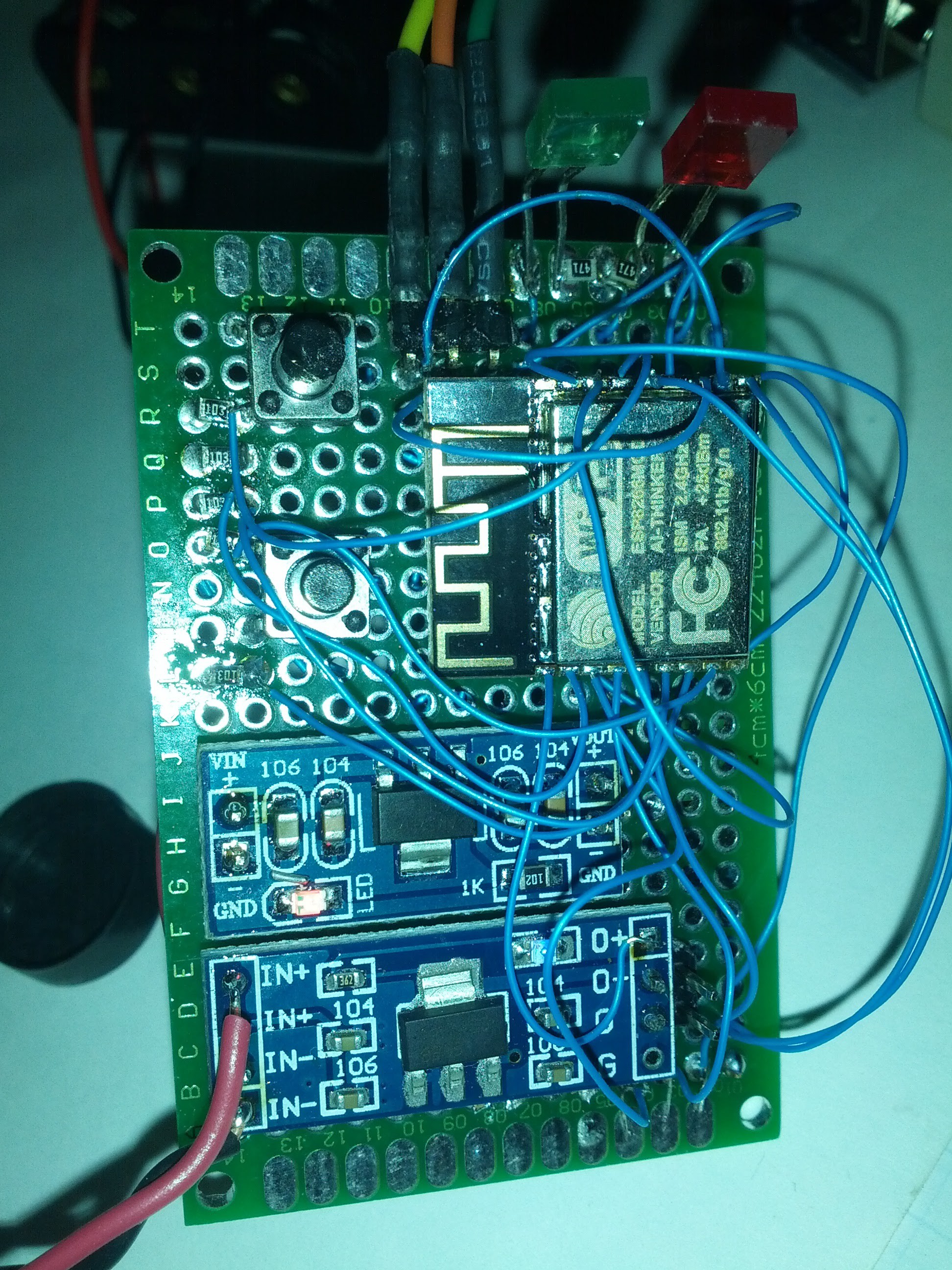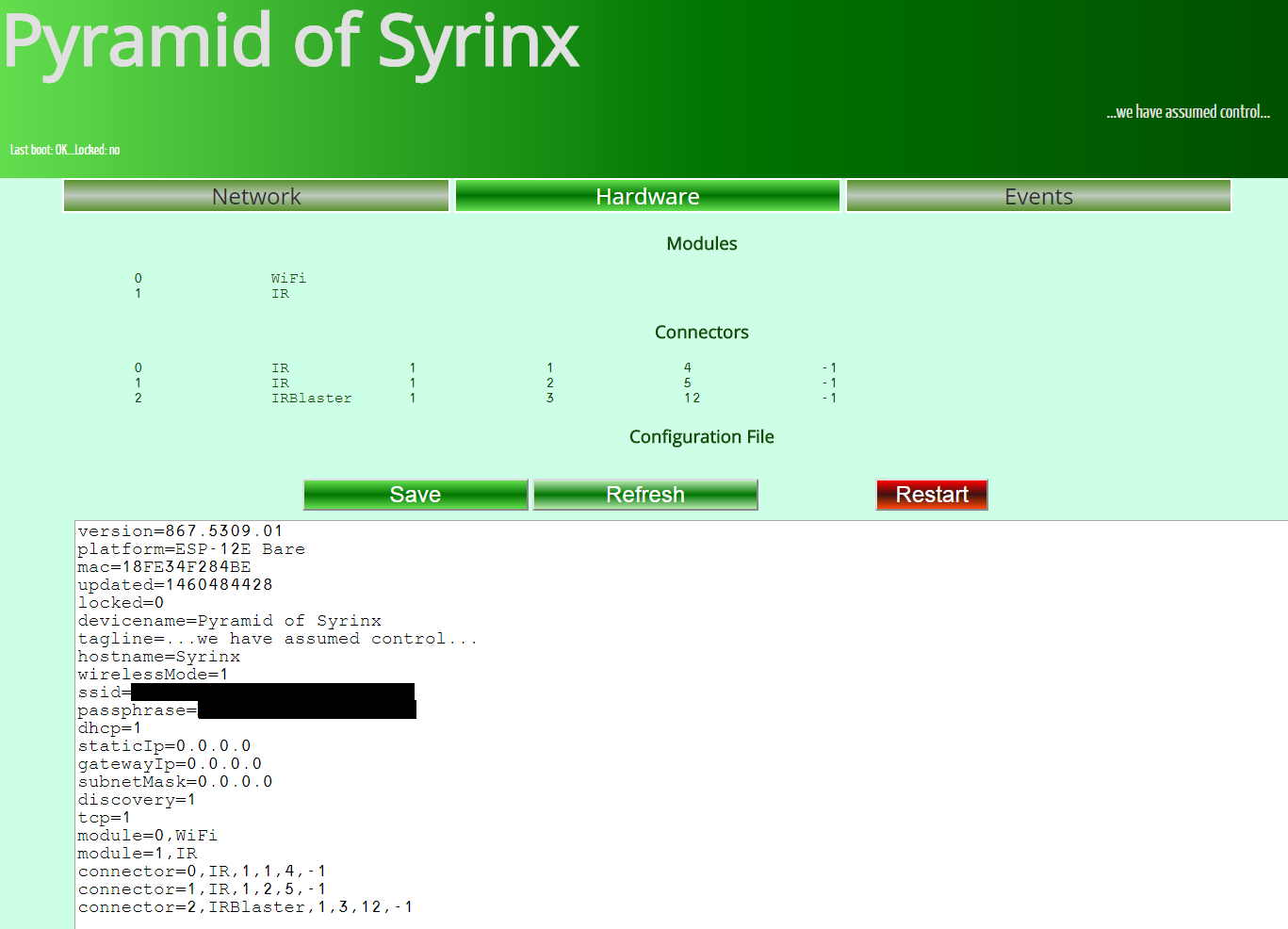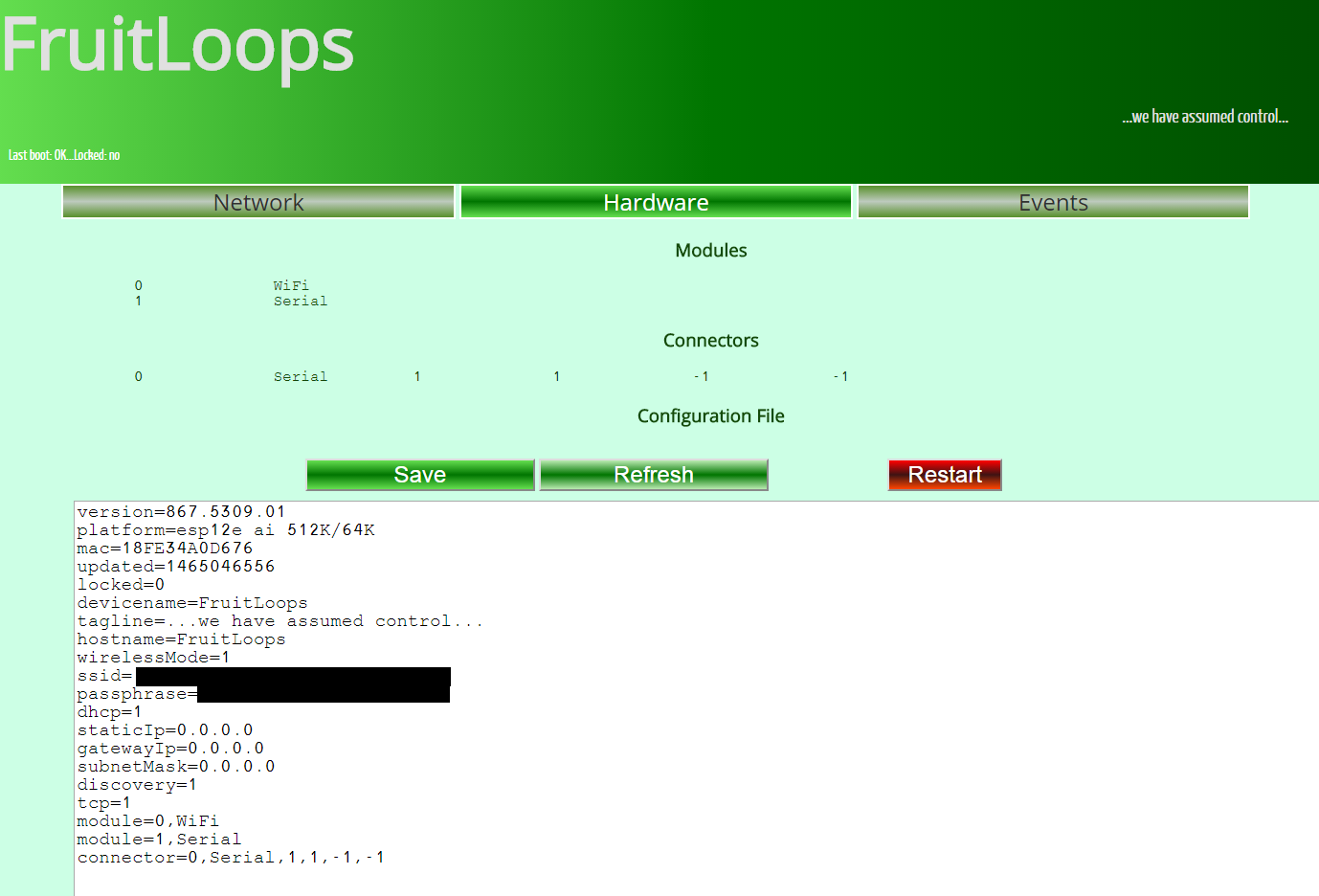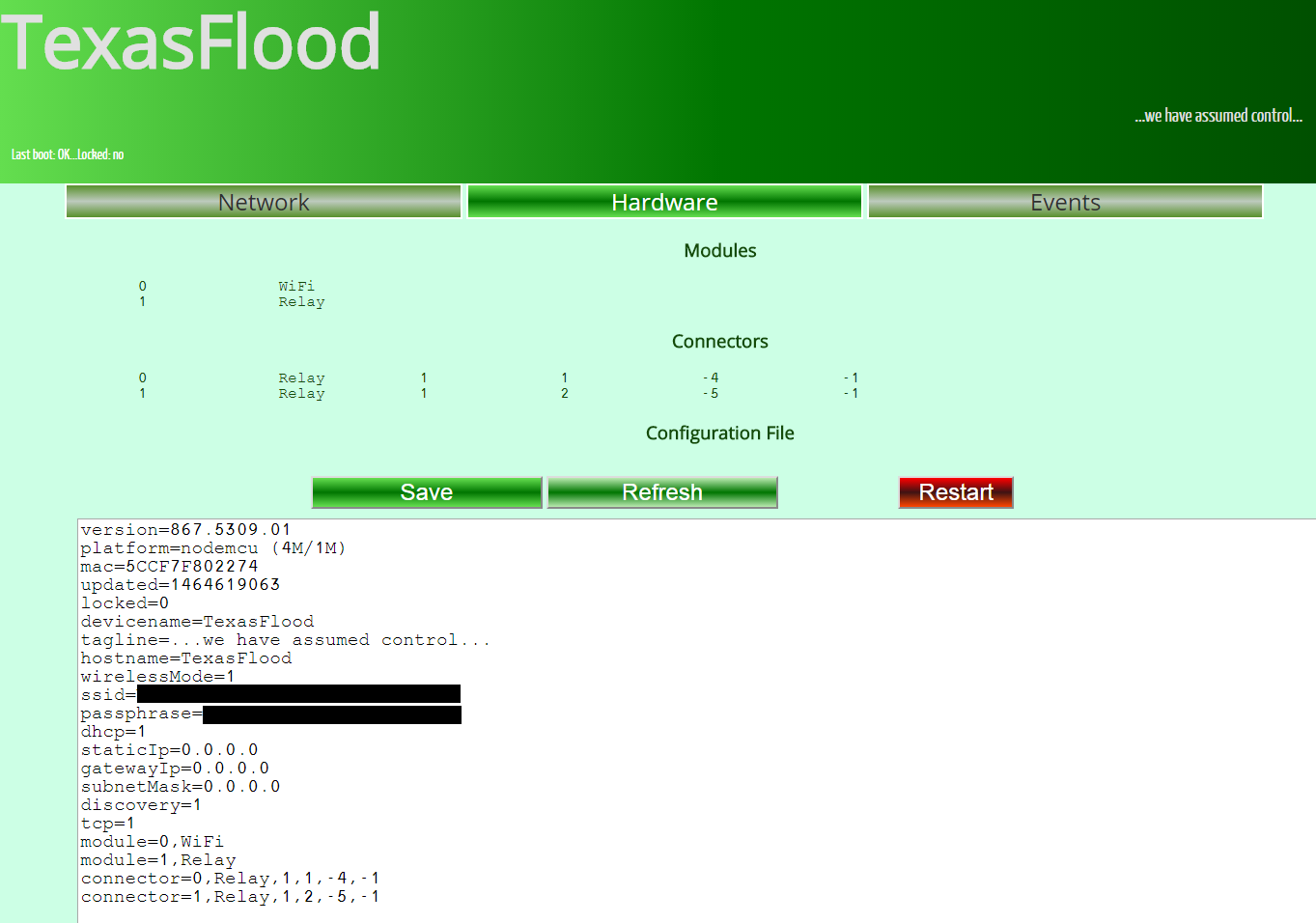-
Trying Arducam Mini!
06/04/2016 at 14:49 • 1 commentI was playing with an Arducam ESP8266 UNO board (www.arducam.com/arducam-esp8266-uno-board-arduino-camera/) with 2MP and 5MP modules and since I now had an extra camera module, I built an ESP8266 board to use one of them. I even went crazy and used SMD resistors, which actually were easy to solder (once you found them after dropping and got them where they needed to be). I'm using a ~6.2V power supply and 3.3V/5V 1117 boards.
![]()
This board has status leds on G0 and G2 and uses the same GPIO as the Arducam board for the camera header on the back side. I also added a 3-pin header for a PIR device, which is connected to A0 (with 10K/4.7K divider).
Somehow the wiring is correct first time and the camera is capturing! I'm using the Arducam library and 2MP example right now (modified to use smaller buffer size to avoid TCP data loss).
I still need to try the PIR device to verify analog read is working. I may add a new camera connector type to this library to handle this setup, and allow stuff like capture-to-file, PIR-triggers-capture, etc.
Family portrait (relay bro and serial sis) captured by this guy...
![]()
-
Infrared Blasters/Connectors
06/04/2016 at 14:17 • 0 commentsI built a couple versions of the infrared devices. I need to finish packaging this version using the top from one of the old X10 powermids. This one has a blaster and two IR connectors.
I also added some useful stuff to the software like TCP logging (connect to port 23 with PuTTY, etc. instead of needing physical connection to the UART).
I still haven't done a tremendous amount of IR device testing, but I use one daily to control Panasonic and Yamaha devices over http (browser bookmarks). I would still like to scope the infrared output to find the best component values. I may try to get IR learning working at some point; I did have it working with an Arduino, but it's not too useful anymore except for really oddball devices.
![]()
-
Serial Version
06/04/2016 at 13:47 • 0 commentsI built a serial test setup to add the code to handle tcp and http serial control, using a cheap serial board (http://www.amazon.com/uxcell®-MAX232CSE-Transfer-Converter-Module/dp/B00EJ9NAKA). I haven't hooked it to an actual device yet (don't have many left with serial ports, except for a TI103 X10 interface which is still working well and will eventually be switched from Homeseer to this device). It appears to working fine when connected to a USB-Serial COM port.
![]()
-
2-Relay Version
06/04/2016 at 13:16 • 0 commentsI built a 2-Relay version using one of the cheap relay shields (http://www.amazon.com/JBtek®-Channel-Shield-Arduino-Raspberry/dp/B00QGUFVWU) and an RGB LED. I wanted to power it with 12V so the same supply could also be used for motorized ball valves for house water control. To get reliable operation, I needed to use two of the little 1117 5V boards, one for a nodemcu board and one for the relays. I also needed a power resistor to drop the supply voltage to the regulators. A 12 ohm 5 watt resistor is giving 10.8V to the boards with both relays off and 9.4V with both relays on. Might be able to use a single regulator board with a bigger resistor to lower the voltage even more, but I haven't tried.
![]()
-
The Start
11/02/2015 at 01:47 • 0 commentsStarted with my only ESP-01. With limited I/Os, just did a single IR blaster. But it does successfully appear as a GC Wifi2IR, plus adds http IR commands.
Global Cache Wireless Emulator (ESP8266)
Use an ESP8266 for wireless I/R, sensors, and relay control. Emulate Global Cache protocol for compatibility with existing products.
 flynnwt
flynnwt



